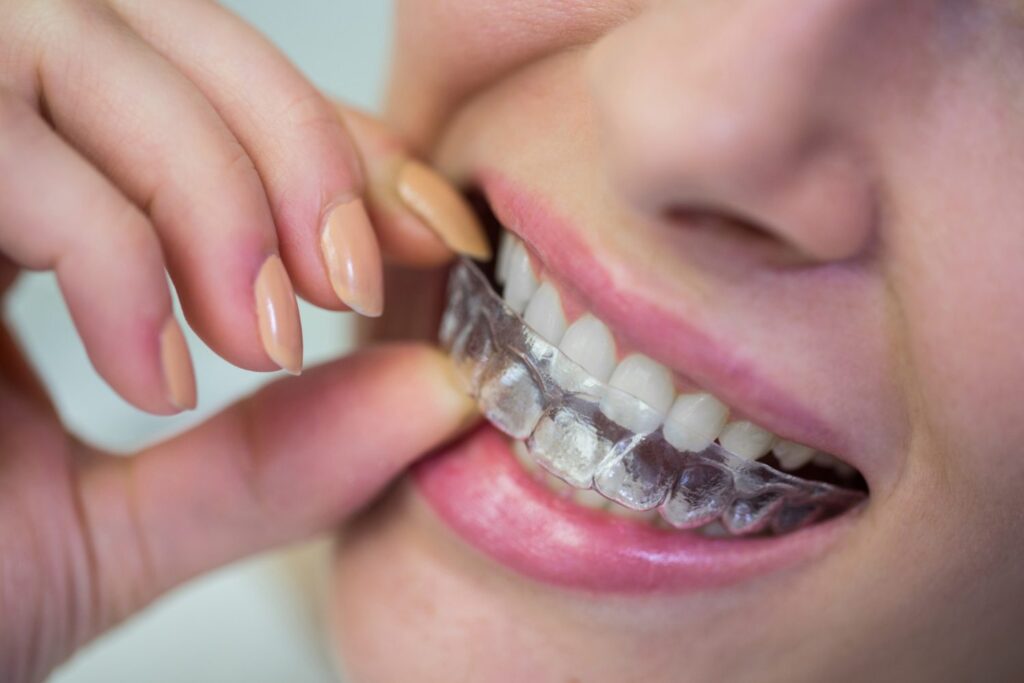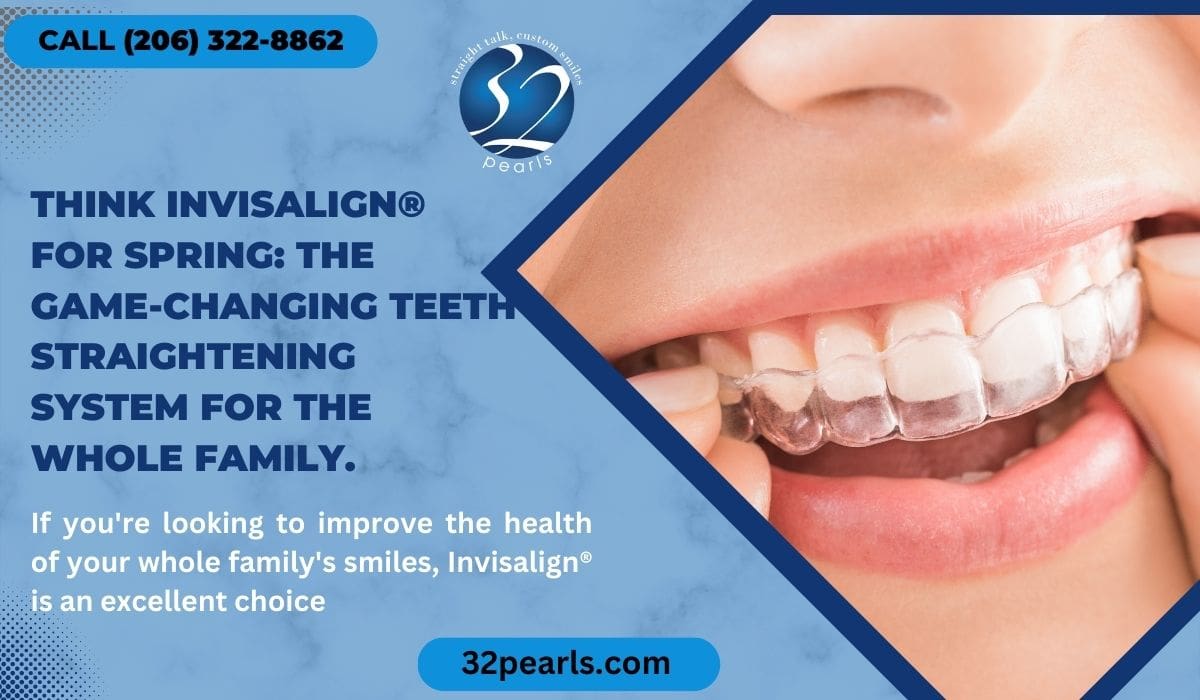Success Stories: How Invisalign Changed Lives and Improved Confidence
Success Stories: How Invisalign Changed Lives and Improved Confidence
Blog Article
Invisalign vs. Conventional Dental braces: Which Choice Is Right for You?
When thinking about orthodontic therapy, the selection in between Invisalign and standard braces offers a number of important factors that merit careful assessment. Invisalign uses a very discreet choice with removable aligners, while traditional dental braces offer a more visible yet efficient solution for serious misalignment.
Summary of Therapy Alternatives

In comparison, conventional dental braces include metal brackets and cables that are bound to the teeth. This method applies constant pressure gradually to achieve placement. While effective for complex orthodontic issues, conventional dental braces call for normal visits for modifications and can posture difficulties in preserving oral hygiene as a result of the trouble of cleaning about braces and cables.
Both alternatives have their merits, and the selection often depends upon particular dental conditions, lifestyle choices, and patient compliance. Ultimately, consulting an orthodontic professional is critical for determining one of the most ideal therapy strategy customized to specific requirements. Understanding the nuances of each option can substantially influence the overall success of orthodontic treatment.
Aesthetic Factors To Consider
A substantial variable affecting the option between Invisalign and traditional braces is the visual appeal each therapy offers. Invisalign aligners are crafted from clear plastic, making them practically invisible when put on.
On the other hand, standard dental braces include steel braces and cords, which can be much more visible. While developments in orthodontic innovation have caused the growth of smaller sized brackets and colored elastics, conventional dental braces still maintain an even more conspicuous account. For some individuals, the exposure of dental braces may deter them from seeking essential treatment.
Ultimately, the option in between Invisalign and typical dental braces might rest on individual preferences concerning aesthetics. People who prioritize discernment typically lean toward Invisalign, while those who are much less worried concerning visibility may go with typical dental braces. Understanding the visual ramifications of each option is essential for making an informed choice that straightens with one's way of life and choices.
Comfort and Convenience

In regards to benefit, Invisalign aligners are removable, enabling people to enjoy their preferred foods without constraint and maintain optimal oral health. Brushing and flossing are simplified, as the aligners can be secured throughout these regimens, whereas standard braces need careful maneuvering around braces and cords.
Furthermore, Invisalign's dynamic system enables for less orthodontic visits. People normally receive multiple sets of aligners at as soon as, which can improve the therapy process and decrease time spent in the orthodontist's chair. In contrast, typical braces necessitate routine modifications, making them less practical for those with busy timetables. Invisalign. On the whole, the comfort and convenience of Invisalign make it an enticing selection for numerous individuals looking for orthodontic treatment.
Treatment Period and Effectiveness
While both Invisalign and typical braces are effective in remedying dental misalignments, the duration of therapy can differ significantly in between the 2 options. Normally, Invisalign treatment can take anywhere from 12 to 18 months, depending upon the intricacy of the instance. The clear aligners function by gradually shifting teeth right into their desired placements, and routine follow-ups with an orthodontist assistance guarantee development remains on the right track.
On the other hand, conventional dental braces often need a longer dedication, normally ranging from 18 months to 3 years. This results from their set nature and making use of brackets and cables, which can be extra reliable for serious misalignments and intricate situations (Invisalign). The therapy efficiency of typical dental braces is well-documented, as they enable for exact modifications and better control over tooth movement
Inevitably, the option in between Invisalign and traditional braces may pivot on both the expected therapy duration and the details oral issues handy. Consulting with an orthodontist is important, as click here now they can provide customized referrals based on individual demands, ensuring the picked technique straightens with wanted durations and end results.
Expense Comparison and Insurance Policy Alternatives
Cost plays a substantial duty in the decision-making process for individuals taking into consideration orthodontic treatment, whether choosing Invisalign or typical braces. Typically, the expense of Invisalign varieties from $3,000 to $8,000, while standard braces usually cost between $2,000 and $6,000. Elements affecting these prices include the complexity of the case, the period of treatment, and geographical location.
Insurance coverage can considerably affect out-of-pocket costs. Several oral insurance coverage strategies provide partial investigate this site protection for orthodontic treatments, but the specifics can differ commonly. It is crucial for people to evaluate their insurance plan to figure out the level of coverage for either alternative. Typically, standard dental braces may be much more regularly covered by insurance policy plans compared to Invisalign, which some insurance providers classify as a cosmetic procedure.
Additionally, a number of orthodontic techniques use versatile payment plans, making both treatment options much more accessible. People need to ask about potential financing choices and discount rates for ahead of time payments. Evaluating the overall cost, consisting of insurance advantages and repayment strategies, is vital for making a notified decision that lines up with both aesthetic preferences and budget plan factors to consider.

Verdict
In summary, the selection in between Invisalign and traditional braces depends upon numerous aspects, consisting of aesthetic choices, convenience, therapy period, and cost. Invisalign uses a discreet, removable option that helps with oral hygiene and nutritional versatility, while conventional dental braces might be extra ideal for intricate oral concerns and typically come with a reduced cost factor. Eventually, examination with an orthodontist is vital to examine private circumstances and identify the most appropriate therapy option for accomplishing optimal oral placement.
When thinking about orthodontic therapy, the choice between Invisalign and conventional dental braces offers numerous important factors that warrant mindful analysis.Contrasting Invisalign and standard braces exposes distinctive therapy choices for orthodontic improvement.While both Invisalign and conventional dental braces are reliable in dealing with dental misalignments, the period of treatment can vary substantially between the click here now 2 alternatives.Expense plays a substantial function in the decision-making procedure for people taking into consideration orthodontic treatment, whether opting for Invisalign or traditional braces.In summary, the selection between Invisalign and traditional braces pivots on several variables, consisting of aesthetic choices, convenience, treatment duration, and price.
Report this page